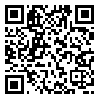BibTeX | RIS | EndNote | Medlars | ProCite | Reference Manager | RefWorks
Send citation to:
URL: http://jdm.tums.ac.ir/article-1-389-en.html
Statement of Problem: Color matching and accurate shade selection are the challenging problems common to restorative dentistry. In ceramometal restorations, the type of substructure alloy affects the final color of bonded porcelain. Nickel- chromium alloy is the most commonly used one that its Iranian product, namely Minalux, is similar to Verabond2.
Purpose: The aim of this study was to assess and compare various color dimensions resulting from Minalux and Verabond2 alloys.
Materials and Methods: Nine disks, approximately 16 mm in diameter and 0.5 mm thickness, were cast from each alloy. Then, porcelain Vita VMK68 A2 was baked onto the entire test disks, following the manufacturer's instruction. Color samples, at the same time and under the same conditions, was measured by Data color spectrophotometer in CIE Lab System and Munsel system under four light sources (A, C, D65 and TL81). Then MATLAB TOOL BOX Statistic 5.2 was used to determine mean and bilateral variance analysis.
Results: It was indicated that the F value on hue, value and chroma was less than of the table value stated with 99% coefficient confidence, confirming Ho theory. In other words, there were not any significant differences between ceramometal disks made of Minalux and Verabond2 in the three dimensions of color.
Conclusion: Having desirable physical, mechanical and biological properties, Verabond2 can be replaced by Minalux alloy.
| Rights and Permissions | |
 |
This work is licensed under a Creative Commons Attribution-NonCommercial 4.0 International License. |




